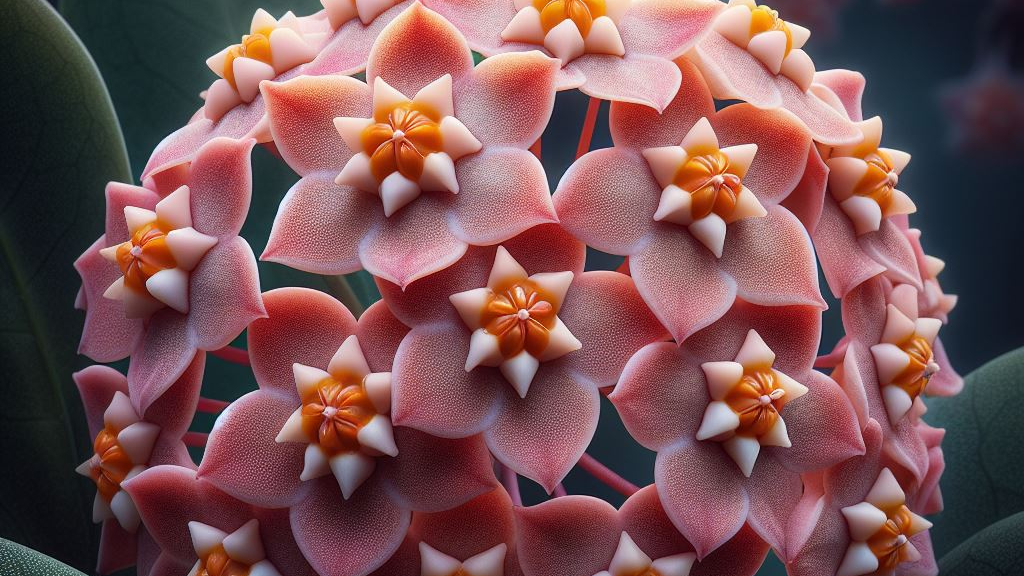Last updated on March 7th, 2024 at 09:35 am
The Hoya plant, scientifically recognized as Hoya, stands out as a resilient and aesthetically pleasing houseplant celebrated for its low-maintenance attributes and decorative foliage. Originating from tropical regions, it has adapted to thrive in diverse conditions. Its capacity to endure neglect positions it as an excellent choice for both novice and experienced plant enthusiasts. The care of this plant is of paramount importance in sustaining its health and ensuring enduring vitality.
Referred to by various names, including Hoya, Wax Plant, or Porcelain Flower, the nomenclature “Hoya” encompasses its diverse species. Despite its tropical origins, it has secured a prominent place in households globally, cherished not only for its visual appeal but also for its impressive resilience. Diligent care of the Hoya plant is crucial for preserving its well-being and promoting a flourishing indoor atmosphere.
Contents
- 1 Essential Care for Optimal Growth:
- 2 Rising Popularity and Indoor Utilization: A Trending Phenomenon
- 3 Understanding About Hoya Plant Care
- 4 Comprehensive Approach to Hoya Plant Care: Addressing Common Issues with Holistic Strategies
- 5 Hoya Plant in Varied Settings: Customizing Care for Versatility
- 6 FAQs
- 6.1 What defines the Hoya plant, and why has it become a sought-after choice for indoor settings?
- 6.2 What physical characteristics does the Hoya plant possess, and how do they influence care practices?
- 6.3 What environmental conditions does the Hoya plant thrive in, and why is this knowledge essential for care routines?
- 6.4 How does one navigate soil and potting considerations when caring for the Hoya plant?
- 7 Author
Essential Care for Optimal Growth:
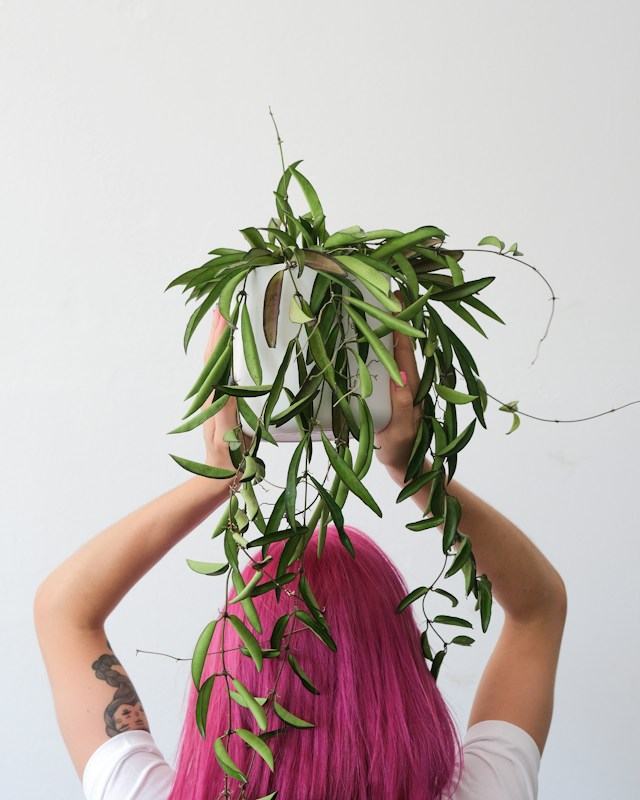
To unlock the full potential of this plant as a robust and visually appealing indoor companion, meticulous care is indispensable. Recognized for its ability to thrive in moderate conditions, it demands minimal effort to maintain. However, achieving a delicate equilibrium in key aspects such as light exposure, proper watering, and appropriate soil conditions is critical. Rigorous care of the Hoya is indispensable to ensure its ability to withstand neglect, transforming it into a vibrant and healthy addition to any living space.
Rising Popularity and Indoor Utilization: A Trending Phenomenon
Scientifically categorized as Hoya, this plant has witnessed a surge in popularity, emerging as a preferred choice for indoor greenery. Its robust characteristics and undemanding maintenance requirements contribute to its widespread adoption among plant enthusiasts. The ascent of the Hoya plant in popularity can be attributed to its resilience, making it an enticing option for those seeking lush foliage without the complexities of intricate care.
Ornamental Allure:
Functioning as an ornamental indoor plant, t Hoya has firmly established its position in interior design. Characterized by glossy leaves and a trailing growth pattern, it adds a touch of sophistication to diverse settings, from homes to office spaces. The adaptability of the plant to various light conditions enhances its versatility, allowing it to thrive where other plants may struggle. The incorporation of this plant into interior decor is a burgeoning trend, with its aesthetic appeal enhancing the ambiance of living and working spaces.
Understanding About Hoya Plant Care
This plant, scientifically identified as Hoya, boasts distinctive physical characteristics that contribute to its allure as an indoor plant. Recognized for its glossy leaves and trailing vines, understanding these visual aspects is crucial for effective care. These features make the Hoya plant a visually pleasing addition to indoor spaces, emphasizing the necessity of attentive care to maintain its vitality.
Environmental Preferences:
To comprehend the Hoya plant fully, consideration of its specific environmental needs is imperative. Displaying exceptional adaptability, it thrives in moderate light conditions and prefers indirect sunlight. Integrating this understanding into the care routine is vital for sustaining the Hoya plant’s well-being. Its diligent care is crucial to ensure the environment provides suitable temperature and humidity levels, as deviations can impact its overall health.
Soil and Potting Requirements:
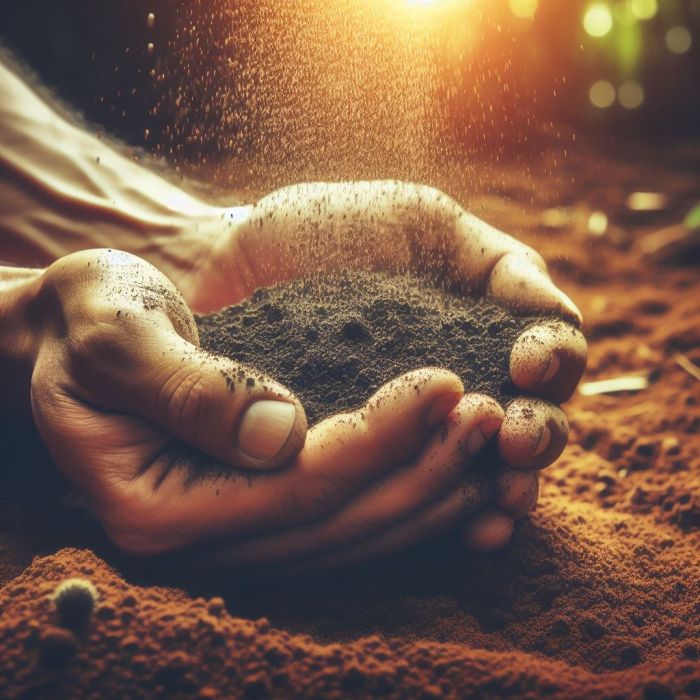
Integral to understanding Hoya plant care is consideration of soil and potting requirements. Preferring well-draining soil, selecting the right potting mix is essential. Emphasizing the care of the Hoya plant underscores the significance of providing suitable soil conditions for optimal growth. Proper potting techniques contribute to the plant’s stability and support its overall health.
Watering Practices for Hoya Plant:
In the comprehensive care of the Hoya plant, the watering routine assumes a pivotal role in determining its overall well-being. Recognizing the critical importance of both frequency and quantity of water is paramount. Striking a delicate balance between the plant’s inherent drought tolerance and its need for appropriate moisture levels is essential. Regularly assessing soil moisture and adjusting the watering schedule accordingly ensures it flourishes without succumbing to issues arising from either excessive or insufficient hydration.
Water Quality Considerations:
Delving into the intricacies of Hoya plant care, water quality emerges as a significant factor influencing its health. It is sensitive to impurities found in tap water, such as salts and chemicals, highlights the critical nature of using filtered water. This not only addresses potential concerns but also fosters a more favorable environment for its growth and development.
Consistency and Observational Vigilance:
Expanding the scope further, a more comprehensive approach involves integrating consistency and vigilant observation into the watering routine. Understanding that care of the Hoya plant is very important emphasizes the need for a stable watering schedule. Consistency in timing and quantity establishes a reliable environment for the plant. Additionally, maintaining regular observations of the plant’s foliage and soil conditions aids in the early detection of signs indicating overwatering or underwatering, allowing for timely adjustments to the care regimen.
Propagation and Repotting:
In the holistic care spectrum for Hoya plants, delving into the intricacies of propagation methods becomes paramount. Its care is very important, especially when exploring the various techniques for propagating new plants. Methods such as stem cuttings and leaf cuttings stand out, demanding meticulous attention to detail. Acknowledging that care of the Hoya plant is very important underscores the necessity for precision in executing propagation, ensuring the new plants inherit the resilience and vitality characteristic of mature Hoya specimens.
Repotting Guidelines:
As Hoya plants mature, the care routine expands to include strategic repotting. Signs such as root overcrowding or the plant outgrowing its current container indicate the critical need for repotting. Adhering to comprehensive repotting guidelines, including selecting an optimal potting mix and minimizing disruption to the roots, becomes imperative. This thorough approach aligns seamlessly with the overarching philosophy that its care is very important, influencing its holistic health and robust growth.
Regular Monitoring and Adjustments:
Expanding the comprehensive approach, a more nuanced strategy involves regular monitoring and adaptive adjustments. Care of the Hoya plant is very important, necessitating ongoing observation of the plant’s growth patterns, root health, and overall vitality. Periodic assessments enable timely interventions, ensuring that propagation and repotting practices align dynamically with the Hoya plant’s evolving needs.
Comprehensive Approach to Hoya Plant Care: Addressing Common Issues with Holistic Strategies
In the broader care framework for Hoya plants, a meticulous examination of common issues becomes integral to sustaining their well-being. The importance of care for Hoya plants is emphasized, particularly when confronting potential threats like pests and diseases. A comprehensive approach involves not only recognizing common pests like spider mites or mealybugs but also comprehending their life cycles and environmental factors contributing to their presence. The acknowledgment that care for Hoya plants is crucial reinforces the need for a multi-faceted strategy, incorporating natural insecticides, and neem oil, and occasionally introducing beneficial insects to maintain a balanced ecosystem.
Yellowing Leaves or Leaf Drop:
Effectively addressing yellowing leaves or leaf drops requires a nuanced understanding and a holistic care perspective. It is important to tackle these issues, prompting a systematic evaluation of potential causes. Overwatering, underwatering, or poor soil drainage can contribute to these symptoms. A comprehensive approach involves not only adjusting the watering routine but also assessing the overall soil condition, inspecting the root system, and ensuring proper ventilation around the plant. This thorough strategy aligns seamlessly with the broader philosophy that care for Hoya plants is crucial, emphasizing the need for holistic solutions to promote the plant’s overall health.
Optimal Growing Conditions:
Expanding the comprehensive approach, and considering optimal growing conditions as a preventative measure enhances the overall care strategy. It is very important to maintain suitable environmental conditions for this plant. Providing the right balance of light, temperature, and humidity reduces the susceptibility of Hoya plants to common issues. Additionally, periodic preventive measures such as inspecting leaves, promoting good air circulation, and periodically cleaning the foliage contribute to a proactive care regimen.
Hoya Plant in Varied Settings: Customizing Care for Versatility
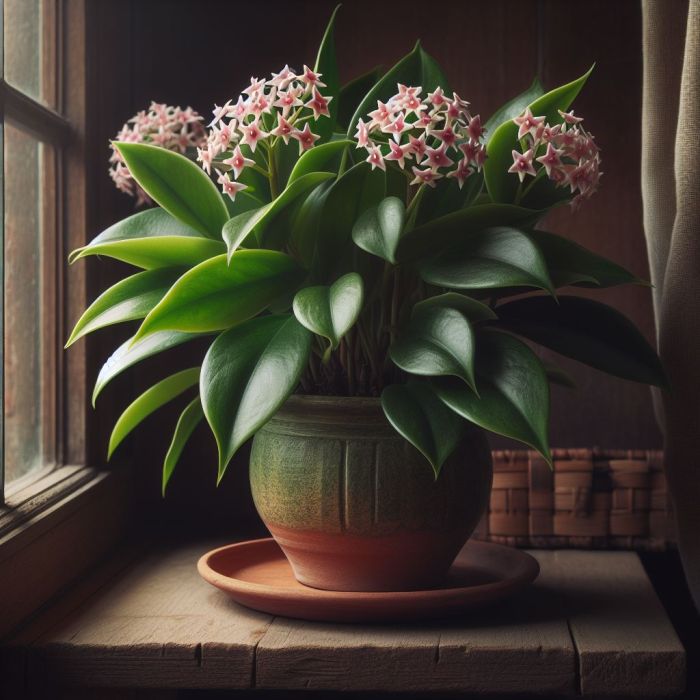
In the realm of comprehensive plant care, grasping its versatility across different settings is essential for optimizing its vitality. The importance of Hoya plant care is underscored, particularly in office environments where its low-light tolerance makes it a fitting choice. Recognizing that Hoya plant care is of utmost importance highlights the continual attention needed for factors like lighting conditions, temperature, and occasional dusting, ensuring a flourishing and low-maintenance green presence in office spaces.
Enhancing Home Decor:
When incorporating Hoya plants into home decor, a deliberate approach to care takes precedence. Hoya plant care is crucial in residential settings, where it can seamlessly complement diverse interior styles. Suggestions for styling, such as placing Hoya plants in decorative pots or integrating them into plant arrangements, elevate their visual appeal. Acknowledging that Hoya plant care is highly important emphasizes the necessity for routine grooming, vigilant monitoring, and adaptive care routines aligning with the dynamics of home environments.
Harmonizing with Companion Plants:
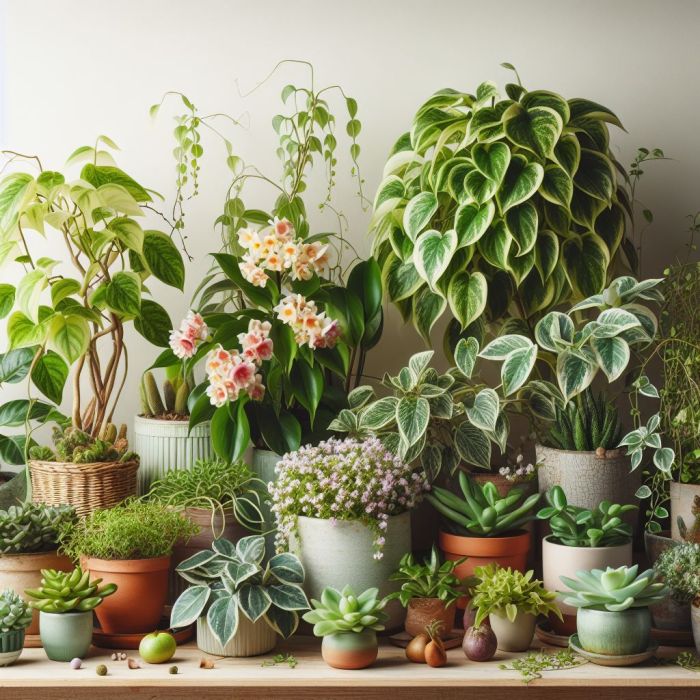
Recognizing Hoya plants’ multifaceted roles extends to their compatibility with companion plants. Hoya plant care is paramount, especially in the selection of suitable plant companions. Flourishing alongside other low-maintenance plants, Hoya plants contribute to a harmonious indoor garden. Embracing the understanding that Hoya plant care is vital involves choosing companions with similar care needs and ensuring appropriate spacing, fostering visually appealing and cohesive plant arrangements.
FAQs
What defines the Hoya plant, and why has it become a sought-after choice for indoor settings?
The Hoya plant, scientifically known as Hoya, is a resilient and visually appealing houseplant celebrated for its low-maintenance nature and decorative foliage. Originating from tropical regions, its adaptability and enduring vitality make it a preferred choice for indoor settings.
What physical characteristics does the Hoya plant possess, and how do they influence care practices?
With glossy leaves and trailing vines, the Hoya plant’s distinctive physical features are crucial for effective care. Attentiveness to these attributes ensures the plant’s aesthetic appeal and overall vitality.
What environmental conditions does the Hoya plant thrive in, and why is this knowledge essential for care routines?
The Hoya plant displays exceptional adaptability, thriving in moderate light conditions and preferring indirect sunlight. Incorporating this understanding into care routines is vital for sustaining its well-being.
Care of the Hoya plant underscores the significance of well-draining soil and appropriate potting mix selection. These factors contribute to the plant’s stability and overall health.
So, as you take care of your Hoya plant, keep in mind that its beauty is a result of the care you give it. The shiny leaves and hanging vines show that the plant is strong and can adapt well. The Hoya is not just a nice decoration – it’s like having a piece of nature right in your home. With the tips from this guide, I hope your Hoya plant grows happily, making your space look even more beautiful. Enjoy looking after your Hoya and let its lasting green charm brighten up your home!

